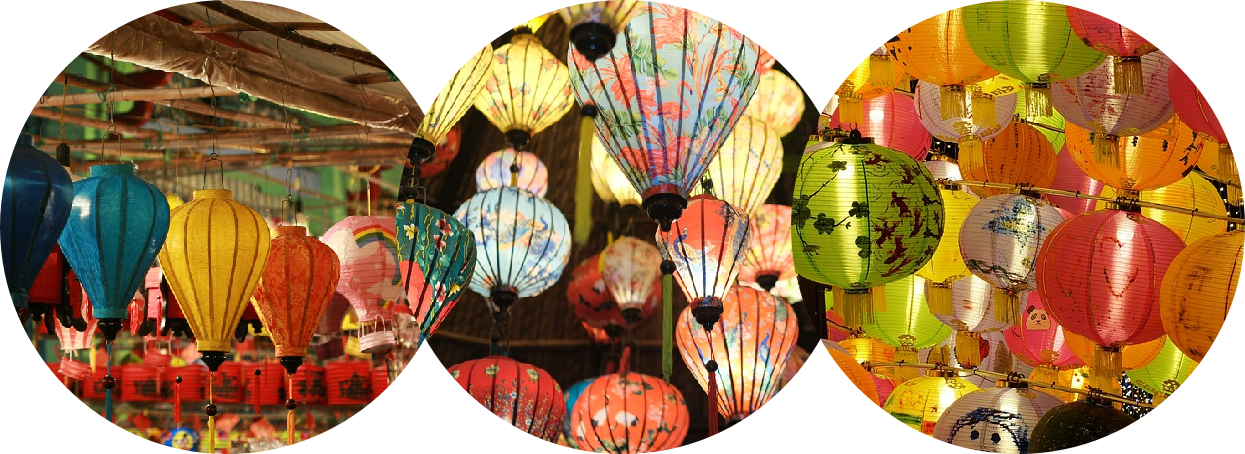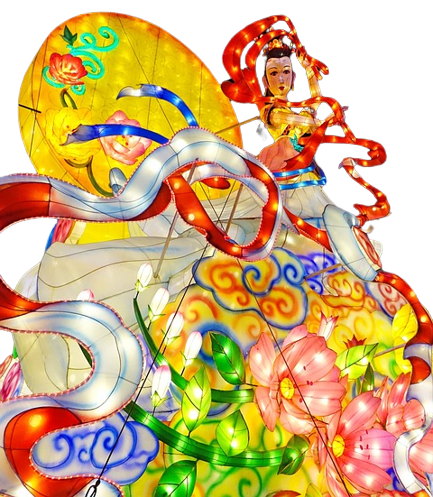28
2023
-
09
Mid-Autumn Festival
Keywords:
Source: internal company
Mid-Autumn Festival is a traditional cultural festival popular among many ethnic groups across the country. It is so named because it happens to be in the middle of autumn. The moon is said to be the largest, fullest and brightest on this night. Since ancient times, people have had the custom of drinking and admiring the moon on the night of the Mid-Autumn Festival to express perfection and auspiciousness. It originated in the Zhou Dynasty, popularized in the Han Dynasty, stereotyped in the early years of the Tang Dynasty, and flourished in the Song Dynasty, and is known as the four major traditional festivals in China, along with the Spring Festival, Qingming Festival, and Dragon Boat Festival.
Origin of the name
 The Mid-Autumn Festival, in the second month of autumn, is marked by the fifteenth full moon, which falls in the midest of the three months of autumn, so it is called "Mid-Autumn Festival". The moonlight is brighter than usual on this night, which is also called "moonlit night". Because the day falls in autumn and August, it is also known as the "Autumn Festival" and "August Festival"; because of worshiping the moon, it is also called the "Moon Festival" ; because of the reunion of family members and the return of married daughters to their homes, it is also called the "Reunion Festival" and "Girls' Festival"; in mid-autumn, various fruits are ripe, so it is also called "Fruit Festival". During the Mid-Autumn Festival, people gather to admire the moon, offer sacrifices, and celebrate the harvest.
The Mid-Autumn Festival, in the second month of autumn, is marked by the fifteenth full moon, which falls in the midest of the three months of autumn, so it is called "Mid-Autumn Festival". The moonlight is brighter than usual on this night, which is also called "moonlit night". Because the day falls in autumn and August, it is also known as the "Autumn Festival" and "August Festival"; because of worshiping the moon, it is also called the "Moon Festival" ; because of the reunion of family members and the return of married daughters to their homes, it is also called the "Reunion Festival" and "Girls' Festival"; in mid-autumn, various fruits are ripe, so it is also called "Fruit Festival". During the Mid-Autumn Festival, people gather to admire the moon, offer sacrifices, and celebrate the harvest.
Historical origins
The Mid-Autumn Festival originates from the worship of celestial phenomena and evolved from worshiping the moon on Autumn Eve in ancient times. Since ancient times, the Mid-Autumn Festival has included folk customs such as worshiping the moon, appreciating the moon, eating moon cakes, watching lanterns, appreciating osmanthus flowers, and drinking osmanthus wine. According to records, the Zhou Dynasty has "Worship the Moon on the Eve of the Autumn Equinox".In the middle of the eighth month of the lunar calendar, which is also the time for harvesting autumn grain, people hold a series of ceremonies and celebrations to thank the gods and goddesses for their blessings.During the Mid-Autumn Festival, the temperature was already cool but not yet cold, the sky was high and the moon was bright in the middle of the sky, which was the best time to admire the moon. Therefore, moon worship was gradually replaced by moon admiring, and the color of sacrifice gradually faded, while the festival continued and was given a new meaning. During the Northern Song Dynasty, the 15th day of August was officially designated as the Mid-Autumn Festival. During the Ming and Qing Dynasties, the Mid-Autumn Festival was as famous as New Year's Day and became the second largest traditional festival in my country after the Spring Festival. In the thousands of years of inheritance, it has undergone several changes and transformations, and finally the spirit of "family reunion" has become the main cultural connotation of today's Mid-Autumn Festival.
Festival folk customs
During the Mid-Autumn Festival, when there are few clouds and mist, and the moonlight is bright and clear, there are a series of festive activities, such as appreciating the moon, worshiping the moon, eating moon cakes, lifting lanterns, guess lantern riddles, dancing with grass dragons, etc..
Worship the moon
 Moon Worship is a very ancient custom in China, which is actually an activity of worship of the "Moon God" by the ancients. In ancient times, there was the custom of "autumn twilight and evening moon". To worship the moon, a large incense burner is set up and offerings such as mooncakes, watermelons, apples, jujubes, plums and grapes are placed on the table. The moon festival is an important part of the Mid-Autumn Festival, as it expresses people's best wishes. As one of the important rituals of the Mid-Autumn Festival, moon worship has been carried on from ancient times to the present day.
Moon Worship is a very ancient custom in China, which is actually an activity of worship of the "Moon God" by the ancients. In ancient times, there was the custom of "autumn twilight and evening moon". To worship the moon, a large incense burner is set up and offerings such as mooncakes, watermelons, apples, jujubes, plums and grapes are placed on the table. The moon festival is an important part of the Mid-Autumn Festival, as it expresses people's best wishes. As one of the important rituals of the Mid-Autumn Festival, moon worship has been carried on from ancient times to the present day.
 Appreciate the moon
Appreciate the moon
The custom of moon appreciation was formally formed in the Tang Dynasty. According to records, on the night of August 15th, Emperor Xuanzong of the Tang Dynasty prepared a banquet of wine and played with the scholars who stayed in the ban. From then on, every August 15th, it is the custom to enjoy the moon, and a large number of a large number of mid-autumn moon poems have appeared.
Chasing the moon
The so-called "chasing the moon" means that after the 15th day of the 8th month of the Lunar Calendar, the excitement is still not over, so on the following night, many people invite relatives and friends to continue admiring the moon, which is called "chasing the moon."
Guess lantern riddles
On the night of the festival, many lanterns are hung in public places and people gather together to guess the riddles written on the lanterns.

Eat mooncakes
Mooncakes were originally used as offerings to the moon god. Later, people gradually regarded admiring the moon and tasting mooncakes during the Mid-Autumn Festival as a symbol of family reunion. Today, eating mooncakes has become a must-have custom for the Mid-Autumn Festival in China.


Appreciate osmanthus flowers and drink osmanthus wine
People often eat mooncakes and enjoy osmanthus flowers on Mid-Autumn Day, and consume various kinds of food made from osmanthus flowers. On the night of the Mid-Autumn Festival, looking up at the laurel in the moon, smelling the fragrance of osmanthus, drinking a cup of osmanthus honey wine, and celebrating the reunion of the family has become a beautiful enjoyment of the festival.
Folklore
 Chang'e flies to the moon
Chang'e flies to the moon
The myth of "Chang'e flying to the moon" originated from the ancients' worship of the stars. The story first appeared in "Gui Zang". Later, the folk further developed the story and evolved it into multiple story versions. According to the Western Han Dynasty's "huai-nan tzu", Chang'e ascended to the Moon Palace because she stole the immortality pill that her husband Hou Yi had asked for from the Queen Mother of the West.
Wu Gang chopping the tree
According to the novels of Tang Dynasty, it was because Wu Gang, a man from Xi He, made a mistake that he was punished to cut down the laurel tree in the moon. This tree grows as it is cut down, and can never be cut down.
Jade Rabbit making heavenly medicine
There is a jade rabbit beside Chang'e. It is said that Chang'e's body became lighter and when she began to lift into the air, she panicked and picked up the white rabbit she had been feeding. The white rabbit followed her to the moon. The Jade Rabbit has a medicine pestle in the moon palace, and it uses it to pound the elixir of immortality at night.
(resource: Baidu Encyclopedia)
"2021.08.29 300pcs Jade Rabbit and Moon Cake 玉兔與月餅 (2)" by 白菜 / Grace is licensed under CC BY 2.0.
"I wish you a happy Mid-Autumn Festival and even fake ~ ^^" by rx1230 is licensed under CC BY-ND 2.0.
"Mooncake side view" by visualdensity is licensed under CC BY 2.0.
"Mid-Autumn Festival Full Moon (中秋节的满月)" by eviltomthai is licensed under CC BY 2.0.
"NEAR FULL MOON TONIGHT 29-09-2012 in Melbourne Australia- Also it is Mid Autumn Festival for the Chinese, Japanese, Korean and Vietnamese" by PsJeremy is licensed under CC BY 2.0.
Related news
2024-06-13
2024-05-09
2024-04-19

